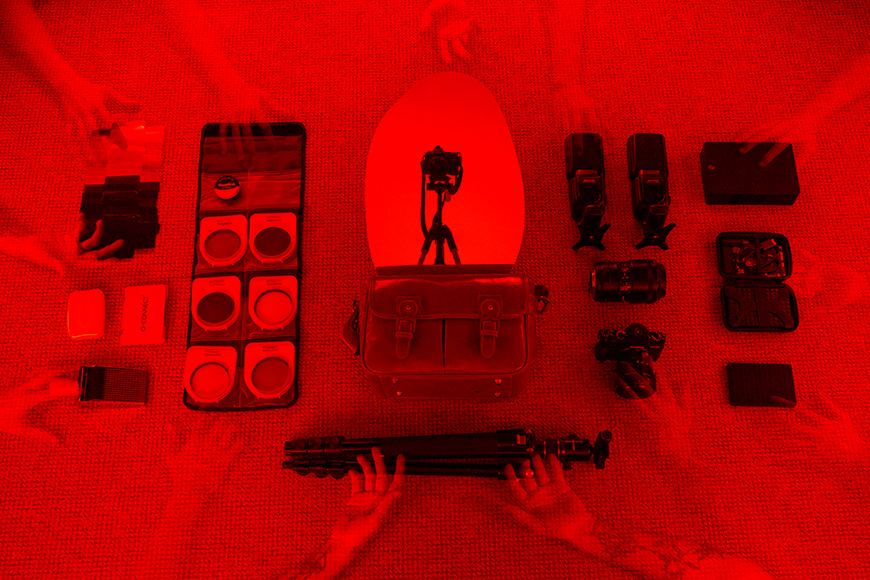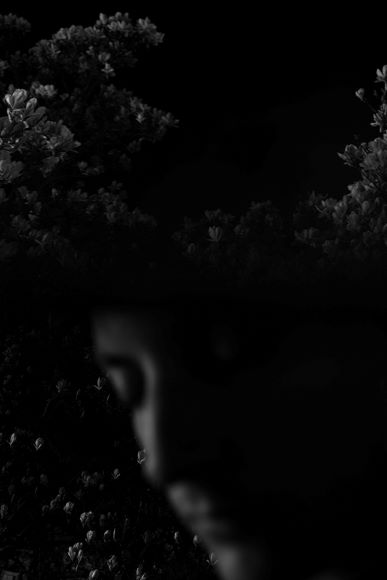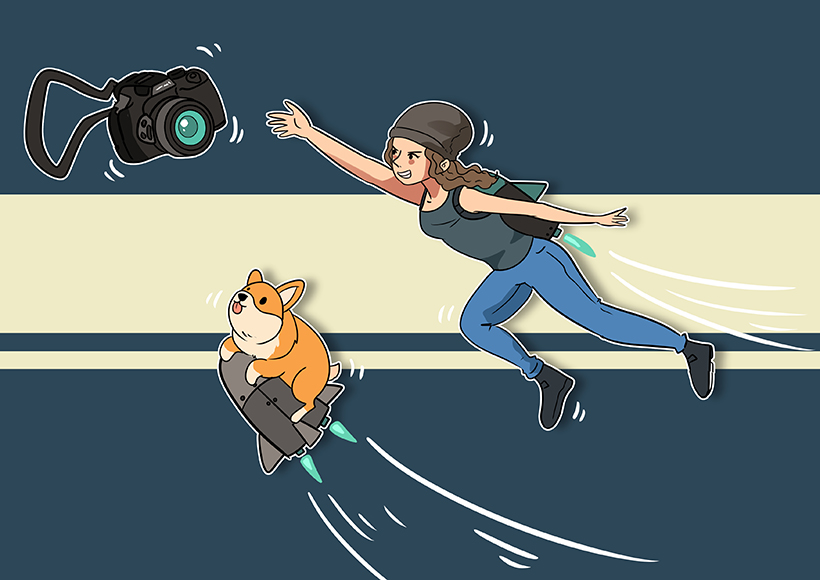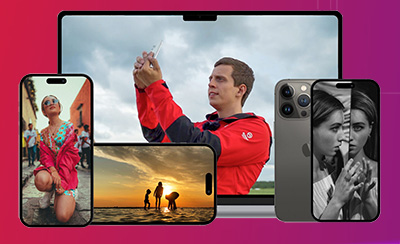










William Josephs Radford
Fine Art | Last Updated: May 20, 2025
Shotkit may earn a commission on affiliate links. Learn more.
My name is William Joe Josephs Radford. I’m a fine art photographer from Spain, currently based in the UK.
Born in 1998 in Marbella to British expat parents, I grew up in a highly creative environment. My mother is a silk-screen artist, and my father constantly sketched house plans.
My childhood was spent in the Spanish countryside building shelters, making bombs, killing cacti, and shooting air rifles. However, living so far from town and being a guiri was challenging and often made me feel like an outsider.
I didn’t enjoy school much, so drawing became my primary outlet. I used it as a form of rebellion, sketching my way through classes.
In 2013, I began experimenting with photography, taking pictures on my phone before convincing my parents to buy me my first bridge camera. This interest was nurtured by a short introduction to cameras and post-production in an IT class with my best friend, who also enjoyed photography.
Being a photography enthusiast himself, our IT teacher would sometimes pull us both out of English class to work on mini photography projects.
This is where I adopted a key aspect of my practice: getting as close to the final image as possible in-camera.
This manifested in a refusal to use Photoshop to edit any of my work. This extends to the point where all of my images are riddled with dust spots, which I now almost consider a hallmark of my work. If you look closely, you won’t be able to unsee them.
My friend and I created Instagram pages and started competing for likes, spending hours following and unfollowing strangers like it was a sport. Although superficial, the validation I was receiving from social media solidified my addiction to the art form.
I gained a substantial following and chased likes for a while, taking pretty pictures I thought would perform well on the platform. I vividly recall my first controversial photo which was of my friend wearing a bowler hat, framed by a noose.
The image sparked a mixed reaction and upset many people, which wasn’t my intention, but admittedly, it felt very different from the surface-level validation I had been receiving before.
People were engaging with the piece emotionally for the first time, feeling compelled to voice their opinions in the comments.
This experience was further validated during my studies at the University of Gloucestershire, where I pursued my passion for photography. A common theme among all the artists we studied was their ability to create controversy.
As with many renowned artists, it seemed the only way to leave your mark on the photographic landscape was to go against the grain. Artists such as Sophie Calle, Andres Serrano, Philip-Lorca diCorcia, and Michael Wolf began to influence my work.
Currently, my goal is to create art that is not only visually appealing but also intellectually stimulating.
While my work is deeply personal, I refuse to be limited to one genre or style. A key aspect of my process is selecting a theme, acquiring new techniques to explore it, and moving on to the next.
I am recognised for the symbolic depth in my work, using semiotic elements to explore the intricate relationships between beauty, discomfort, and taboo.
My approach often involves confronting controversial and provocative subjects in an emotionally immersive way. In my practice, I’ve addressed themes such as religion, pornography, drugs, and life and death.
Over the years, I’ve focused on breaking new ground, both conceptually and technically, always pushing the limits of my artistic boundaries. At times, substances like weed and alcohol have aided in altering my mindset, offering new perspectives that I might not have reached otherwise.
While I don’t romanticise or suggest this as a method, it is part of my process and something essential to acknowledge.
I have used the same camera and lens since 2017: a Nikon D7200, currently on its 103,856th shot with a Sigma Art 18–35mm f/1.8.
I also own a Sigma 105mm f/2.8 Macro, though I only used it when I was first starting. I bought this kit, along with a K&F Concept KF-TM2324 Tripod, before a gap year trip to Australia, and apart from the fact that it has a medium-frame sensor, I haven’t felt the need to upgrade.
After losing a hard drive and laptop with all my raw files during this trip, I’ve been very careful about backing up my work and keeping multiple copies of my archive.
I use a Seagate 6TB Desktop External Hard Drive as my primary storage, and multiple 2TB Seagate Portable Hard Drives, which I keep in different locations in case of a house fire.
I also store all final versions of my artworks on my Dell Inspiron 15 3567 and a SanDisk 500GB Extreme Portable SSD in a safe.
Another reason I’m so particular about keeping all the raw files safe because I use the image’s timestamp to title each artwork. I use a Sujurio 16-digit roller stamp and a Q-Connect red ink pad to print this information on the bottom left corner of my prints.
I also use a Tsukineko Moonlight white ink pad to mark my fingerprint in a black rectangle on my certificates of authenticity.
I’m very attached to my Nikon D7200, and over the years, I’ve explored almost every way of creating images with it. One of the first significant steps was buying my first set of Tinsell’s color flash gels in 2019, inspired by Benoit Paillé’s work.
I used them to explore my childhood home in Spain during trips back from university and during COVID.
Titled Character Building, this project taught me a lot about mixing artificial light with natural lighting. I often took walks at twilight, when the on-camera flash could make its mark on the foreground while still correctly exposing the rest of the scene.
I also used this camera for candid, hip-fire projects, despite it being a clunky DSLR that made a lot of noise. I would walk around coughing to disguise the loud shutter sound while snapping strangers at the beach and airports.
I became so accustomed to shooting from the hip that the camera almost felt like an extension of myself.
During these shoots, I kept the camera on aperture priority mode, with the aperture set to f/1.8 and a relatively high ISO to ensure the shutter speed stayed high as lighting conditions changed.
The Nikon was so obnoxiously obvious that it even led to me being held at knifepoint by a gypsy on the beach once, demanding I delete the picture I had taken of him.
For this reason, I later bought a Fujifilm X-T30 with a Fujifilm 18-55mm f/2.8-4 for this type of candid street-style photography, as it drew less attention to me. It was smaller and, being mirrorless, had no shutter noise.
Sadly, my interest in documentary photography dwindled, leading me to use the camera for another project called Merging Moments. This is the only series I use this camera for, due to its built-in double exposure setting.
I enjoy combining and contrasting signs and symbols from my time in Bulgaria. The setting is extremely helpful once you take the first image, it shows you how it will overlay on the next. Unlike double exposures created in Photoshop, all the photos in this series feature scenes that are very close to each other, as the camera automatically shuts off if you don’t take the second shot quickly.
Over the years, I’ve slowly acquired different accessories to incorporate into my practice, each unlocking a new way of using my Nikon. But by far, the most useful is my phone.
Although I own a pair of Neewer NW-561 Speedlights, I’ve only used them a few times.
My phone, however, is possibly the most useful accessory I own. I use it as a remote trigger and for light painting in many projects, such as Natural Forms, Foreign Landscapes, Dirty Dishes, Holy Smokes, Objectification, Substitution, Deflowered, and Cherry Blossom.
All of these projects exclusively use my phone to light the images. With the camera on a tripod and set to a long exposure, I use different colors on the screen to paint in detail.
Light painting was the first experimental photography technique I learned, and it’s a technique I am still finding new ways to use.
In Deflowered, I wanted to showcase this skill. I used pornography to light floral still lives, projecting erotic content via my phone screen to illuminate the subject. I call this technique Light Tainting, blending beauty, shame, and exposure themes.
Aside from the shock value, I created this series to shed light on porn addiction and desensitization, ultimately encouraging a more sensitive perspective on the subject.
Moving on from this in 2023, the Semi-Detached series marked a new era of abstraction and experimentation, incorporating various techniques such as ghosting and lens masking. Through this project, I explored the concept of creating multiple exposures in-camera without the benefit of the built-in setting on the Fujifilm X-T30.
In previous interviews, I’ve expressed that each technique is like a different language. In this case, I used these methods combined with light painting and flash gels to convey a sense of detachment during a lucid period.
Until then, I had strived to produce clean, polished images, so this series became an opportunity to loosen up and create more unrestricted work.
With those techniques added to my arsenal, my next two ventures came after losing my father in 2024. These are the two projects I have chosen to feature in this article. I aimed to channel my grief into my practice and, hopefully, create something beautiful from his loss.
This is when I began experimenting with Vaseline on the lens; it felt like an apt metaphor not only for his memory loss before his passing, but also for the fog of grief that followed. Titled White Knight, the first series explores the concepts of life and death, heaven and hell.
Through light painting and lens masking, the work used a red and blue aesthetic to convey these dualities. It was during this period that I bought my first colour filter.
Tired of relying on the cover of darkness to create my images, this Zunate red lens filter allowed me to shoot in daylight while remaining consistent with the theme. Once familiar with the filter, I began experimenting by holding it over half of the lens, creating a striking split-tone effect.
This leads me to my latest project: Gradient Loss. After completing the previous series and with my father’s death still looming over me, my attention turned toward the stages of grief.
I began experiencing mild bouts of depression and a sense that life was losing its color, which led me to create my first series in black and white. With my camera set to monochrome, I started experimenting with shapes and forms.
Previously, color had played a massive role in my work, so it was rather liberating not to think about it. This is when I attached the red lens filter while shooting in black and white. I loved its effect on my skin tone and the surreal quality it added to the image.
Encouraged by this, I went on to buy a whole pack of Toileum colored lens filters for the rest of the project. The series finally had a clear meaning: it represents the spectrum of colors and emotions muted during this grief stage.
If each technique is a visual dialect, then the repertoire of skills I’ve acquired through my previous projects has made me fluent in image-making, allowing me to convey concepts more proficiently than ever before.
This project is the culmination of my knowledge and experience behind the lens, unhindered by the distraction of colour. Much of my work is highly performative, especially when incorporating myself into the frame.
I aimed to bring that same energy into the image of my kit. Reminiscent of Alexei Titarenko, I want to emphasise that this image was not created in Photoshop but through long exposure, with the camera set to time mode and my phone used to light my hands in various positions.
I gave myself carpet burn on my elbows and the tops of my feet from crawling around. Music also plays a significant role in my process, setting the tone for the shoot.
I took this photograph at 2 A.M., after a bottle of Jam Shed, while listening to Joji, using my Xiaomi Redmi Note Pro 5G with a flashlight app set to pure red!
The camera was set to f/5 with an ISO of 500, and each exposure lasted around one to two minutes, giving me enough time to move through the composition and light my hands into place.

Check out these 8 essential tools to help you succeed as a professional photographer.
Includes limited-time discounts.






